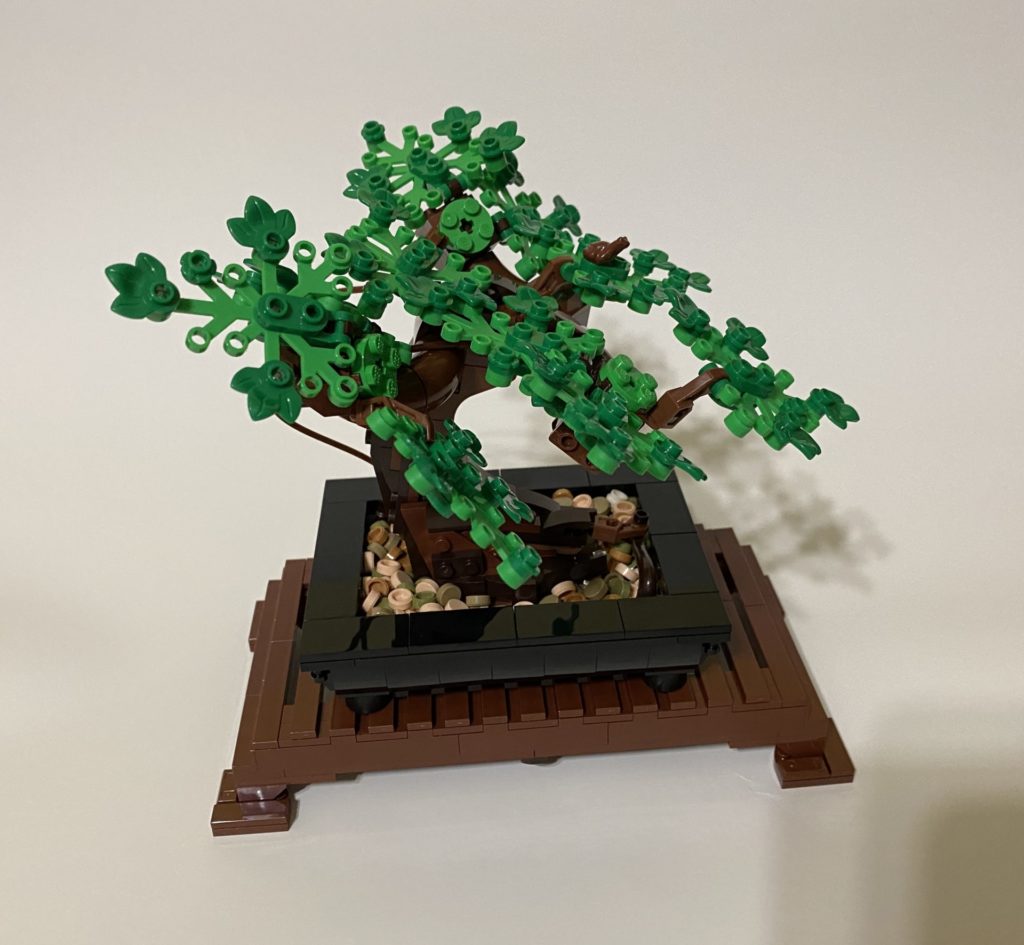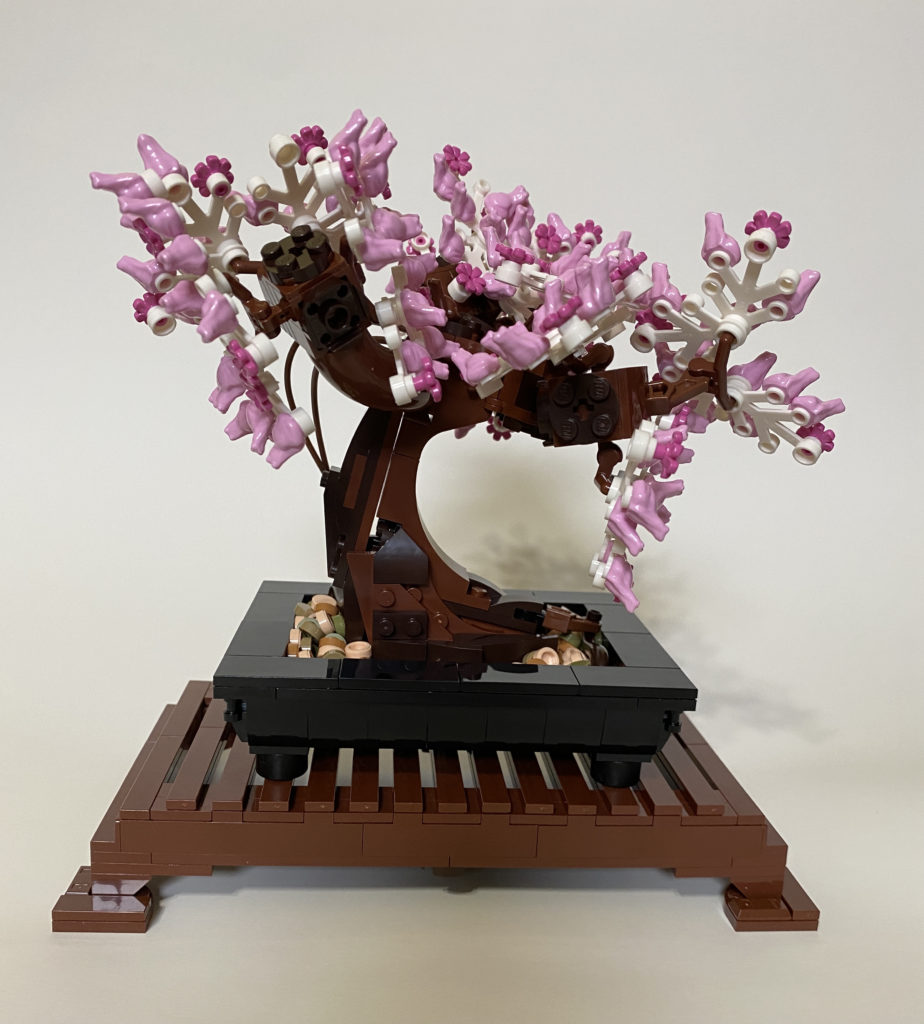I thought my Lego® days were about 50 years ago and the only Lego® sets I’d buy now would be those that showed up on a gift list from a great-niece or great-nephew.
I was wrong.

Behold my finished Lego® Bonsai tree. (Amazon link)
Or if you prefer Bonsai ‘Lego’.
Before you click away, a few more tidbits.
It Costs About What A Real Bonsai Costs
These kits are not cheap, though I honestly don’t know if $49.99 is an average price for a Lego® set, but I’m guessing it isn’t too far off the mark. Even at that price, the bonsai kits are usually marked with the dreaded out of stock on the Lego website. That means they go for much higher prices from third party sellers on the Big A store and other retailers.
Somehow, after talking about this on The Gardenangelists podcast with Dee Nash, I managed to click on the Lego® website at just the right time to find them briefly in stock so I clicked one into my shopping cart and bought it.
I justified the cost by thinking about how much I’ve spent on bonsai trees that died and how much I could spend if I tried another one that would also likely die on me.
How easy is it to grow?
I breezed through the building of the container and its stand. Pretty straight forward to snap those parts together. Adding that mulch? That was easy too. It was also easy enough to put together the branches with leaves.
But the trunk of the bonsai tree? That took some time and study. The two colors of the Lego® building pieces for the tree trunk are medium brown and dark brown so on the instructions they look like brown and brown. I had to take a picture with my phone and then blow it up to see how the pieces fit together.
Remember, I had not built anything with Lego® sets since about… well never mind. No one wants to hear about how Legos® were so simple 50 years ago.
Anyway, I finally got the tree trunk put together.
The tree flowers!
Since it is spring, I forced my bonsai into bloom.

Those are lovely blooms, wouldn’t you agree? The light pink “buds” are actually little tiny frogs. If you go back up to the picture of the tree in full leaf, you’ll see a little tiny brown frog sitting on top.
Why frogs?
Why not frogs?
By the way, the Lego® people are working on making the Lego® pieces and parts out of sustainable materials, so this kit isn’t completely made from petroleum-based plastic. They are now using material sourced from sugarcane.
How to Care for Your Lego® Bonsai
On their website, the Lego® people include care instructions for the bonsai. Don’t overwater or underwater it. No water is just the right amount.
These bonsai trees will also grow in any room with any type of light.
To get them to bloom in the spring or any season, you remove the leaves and replace them with the flowers. But be careful not to push or pull too hard when replacing the leaves or the trunk will come apart on you and you’ll be back to studying those instructions to see if you put it together correctly. (The voice of experience!)
What’s Next?
I saw some images where someone replaced the green leaves on their bonsai with fall-colored leaves, added other frogs, made it look tropical, and more. I think if I did some internet searching, I could find all kinds of Lego parts to decorate my bonsai tree.
But for now, I think I’ll let it flower through the spring and then go green for summer. Perhaps this fall, I’ll seek out fall colored leaves?
Or maybe I’ll put together a nice bouquet of Lego® flowers? (Amazon link)


That’s pretty darn cute. I’m surprised how much I like it. It might make a good gift for one of my (many) friends that don’t garden.
I was surprised to with how drawn I was to it. It was fun to build.
Very cute! Maybe I could get a kit and have my granddaughter put it together. She is crazy for Legos.
That is a great idea, Helen! She would probably find it quite easy to build if she does a lot of other Lego projects…